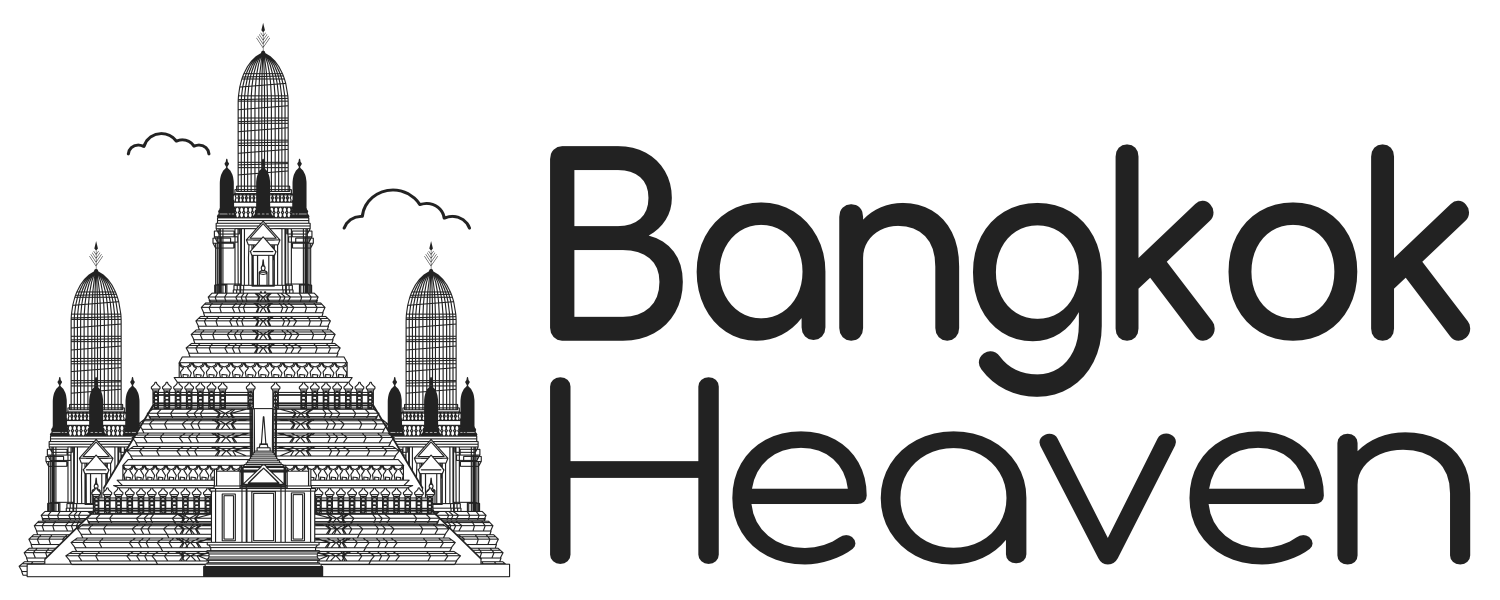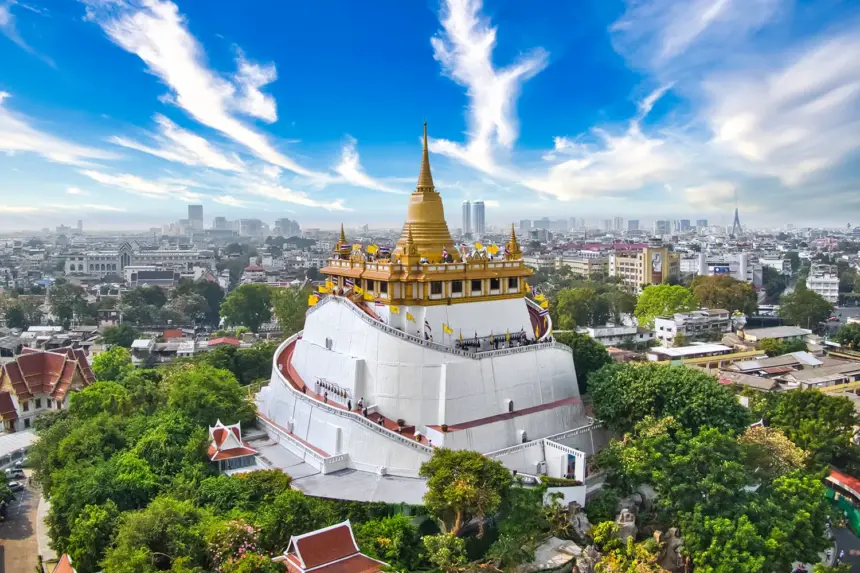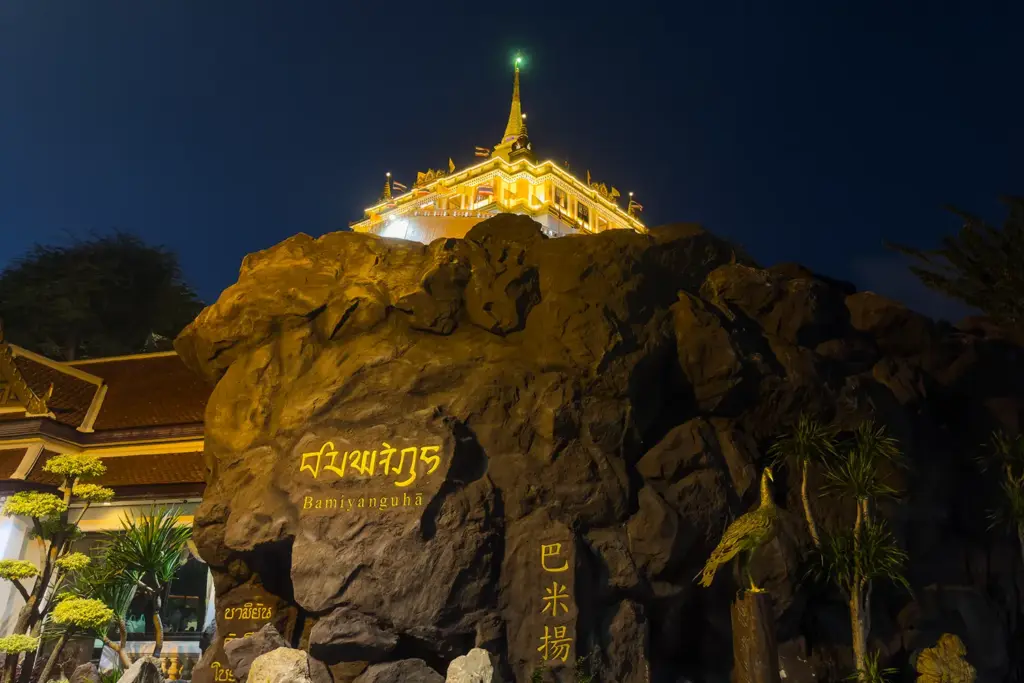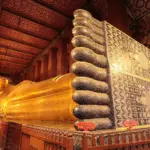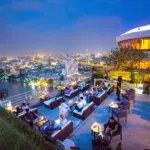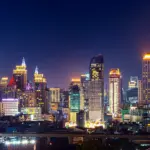Wat Saket: The Golden Mount and Bangkok’s Historical Jewel
Wat Saket, also known as the Temple of the Golden Mount, is one of Bangkok’s most revered and historically significant temples. Nestled atop a man-made hill, the Golden Mount offers panoramic views of the city and provides visitors with a serene escape from the bustling streets below. This article delves into the rich history, architectural significance, cultural relevance, and visitor experience of Wat Saket, presenting an in-depth exploration of this iconic temple.

The Historical Significance of Wat Saket
Wat Saket’s origins trace back to the Ayutthaya period, long before Bangkok became Thailand’s capital. Originally known as Wat Sakae, the temple was restored and renamed Wat Saket by King Rama I when the capital was moved to Bangkok in the late 18th century. The temple has since played a significant role in the religious and cultural life of the city.
During the reign of King Rama III in the early 19th century, the temple became the site of a massive construction project—the building of the Golden Mount, or Phu Khao Thong. King Rama III initiated the construction of a large chedi (stupa) to house Buddhist relics, but the original structure collapsed due to the soft soil of Bangkok. The project was revived during the reign of King Rama IV, and it was completed by King Rama V, who installed a golden chedi at the summit, giving the hill its current name and iconic appearance.
The Architectural Marvel of Wat Saket
Wat Saket’s architecture is a blend of traditional Thai elements with the unique feature of the Golden Mount, which dominates the temple complex. The temple’s design reflects both its historical roots and its role as a place of pilgrimage and meditation.
The Golden Mount (Phu Khao Thong)
The Golden Mount is the most prominent feature of Wat Saket. This artificial hill stands 80 meters high and is crowned with a gleaming golden chedi that houses sacred relics of the Buddha. The chedi is believed to contain a relic brought from Sri Lanka, making it an important pilgrimage site for Thai Buddhists.
The ascent to the summit involves climbing 344 steps that wind around the hill, offering visitors a chance to reflect and meditate as they make their way to the top. Along the way, visitors are greeted by various shrines, bells, and statues that enhance the spiritual atmosphere. The climb is relatively gentle, with lush greenery and cooling breezes providing respite from the heat of the city.
At the summit, the golden chedi shines brightly, visible from many parts of Bangkok. The base of the chedi is adorned with intricate murals and images of the Buddha, while the top offers a stunning 360-degree view of Bangkok’s skyline. The experience of standing atop the Golden Mount, surrounded by the serenity of the temple and the vastness of the city below, is both awe-inspiring and peaceful.
The Ubosot (Ordination Hall)
The Ubosot at Wat Saket is a classic example of traditional Thai temple architecture. This sacred hall is used for ordination ceremonies and important religious rituals. The building is characterized by its multi-tiered roof, intricately carved gables, and beautifully decorated doors and windows.
Inside the Ubosot, the walls are adorned with murals that depict scenes from the life of the Buddha and the Jataka tales, which are stories of the Buddha’s previous lives. The centerpiece of the hall is a large Buddha image seated in the meditation posture, which serves as the focal point for worship and meditation.
The Ubosot at Wat Saket is not only a place of religious significance but also a testament to the artistic heritage of Thailand. The murals and decorations reflect the craftsmanship and devotion of the artists who created them, offering visitors a glimpse into the spiritual and cultural values of Thai society.
The Chedis and Viharas
In addition to the Golden Mount, Wat Saket is home to several smaller chedis and viharas (prayer halls) that are scattered throughout the temple complex. These structures are often decorated with colorful tiles, stucco reliefs, and images of the Buddha, contributing to the temple’s vibrant and sacred atmosphere.
One of the notable features of Wat Saket is its cemetery, which contains the remains of thousands of people who died during a plague in the late 18th century. This cemetery is a reminder of the temple’s role in the community, not only as a place of worship but also as a place of refuge during times of crisis.
The Cultural and Religious Significance of Wat Saket
Wat Saket holds a special place in the hearts of Bangkok’s residents, not only for its historical and architectural significance but also for its cultural and religious importance. The temple is a center of Buddhist practice, attracting worshippers and pilgrims from all over Thailand, particularly during the annual Loy Krathong festival.
Loy Krathong Festival at Wat Saket
The Loy Krathong festival, celebrated in November, is one of the most important events at Wat Saket. During this festival, the temple hosts a grand fair that attracts thousands of visitors. The highlight of the festival is the candlelit procession up the Golden Mount, where participants offer prayers and release small krathongs (decorated baskets) into the water to honor the Buddha and seek blessings.
The atmosphere during Loy Krathong is festive and spiritual, with the temple grounds filled with stalls selling food, flowers, and souvenirs. The fair also features traditional Thai music and dance performances, adding to the vibrant cultural experience. For many Bangkokians, participating in the Loy Krathong festivities at Wat Saket is a cherished tradition that connects them to their spiritual heritage.
Wat Saket as a Pilgrimage Site
Wat Saket is considered one of the most important pilgrimage sites in Bangkok, particularly for those seeking spiritual purification and merit-making. The act of climbing the Golden Mount is seen as a form of meditation and penance, and reaching the summit is believed to bring spiritual merit and blessings.
The temple also plays a significant role during Visakha Bucha, which commemorates the birth, enlightenment, and death of the Buddha. On this day, thousands of devotees gather at Wat Saket to participate in candlelit processions and other religious activities, reaffirming their faith and devotion.
Visiting Wat Saket
For visitors to Bangkok, Wat Saket offers a unique blend of history, culture, and spirituality. The temple is located near the historic Rattanakosin area, making it easily accessible from other major attractions like the Grand Palace and Wat Pho.
Practical Information for Visitors
Wat Saket is open daily from 8:00 AM to 5:00 PM, and there is a small entrance fee to climb the Golden Mount. The best time to visit is early in the morning or late in the afternoon when the temperatures are cooler, and the lighting is ideal for photography.
When visiting Wat Saket, it is important to dress modestly, as it is a sacred site. Visitors should wear clothing that covers their shoulders and knees, and they should remove their shoes before entering the temple buildings. Photography is allowed in most areas, but visitors should be respectful and avoid disturbing worshippers.
One of the highlights of visiting Wat Saket is the opportunity to experience a traditional Thai temple without the large crowds that often accompany more famous sites like Wat Pho or Wat Arun. The temple’s peaceful atmosphere, combined with the breathtaking views from the Golden Mount, provides a memorable and contemplative experience.
Conclusion
Wat Saket, with its iconic Golden Mount, stands as a testament to Bangkok’s rich history, cultural heritage, and spiritual depth. The temple’s blend of traditional Thai architecture, historical significance, and religious importance makes it a must-visit destination for anyone exploring Bangkok. Whether you are drawn by the stunning views, the sacred atmosphere, or the cultural festivities, Wat Saket offers a unique and enriching experience that captures the essence of Thailand’s Buddhist traditions.
